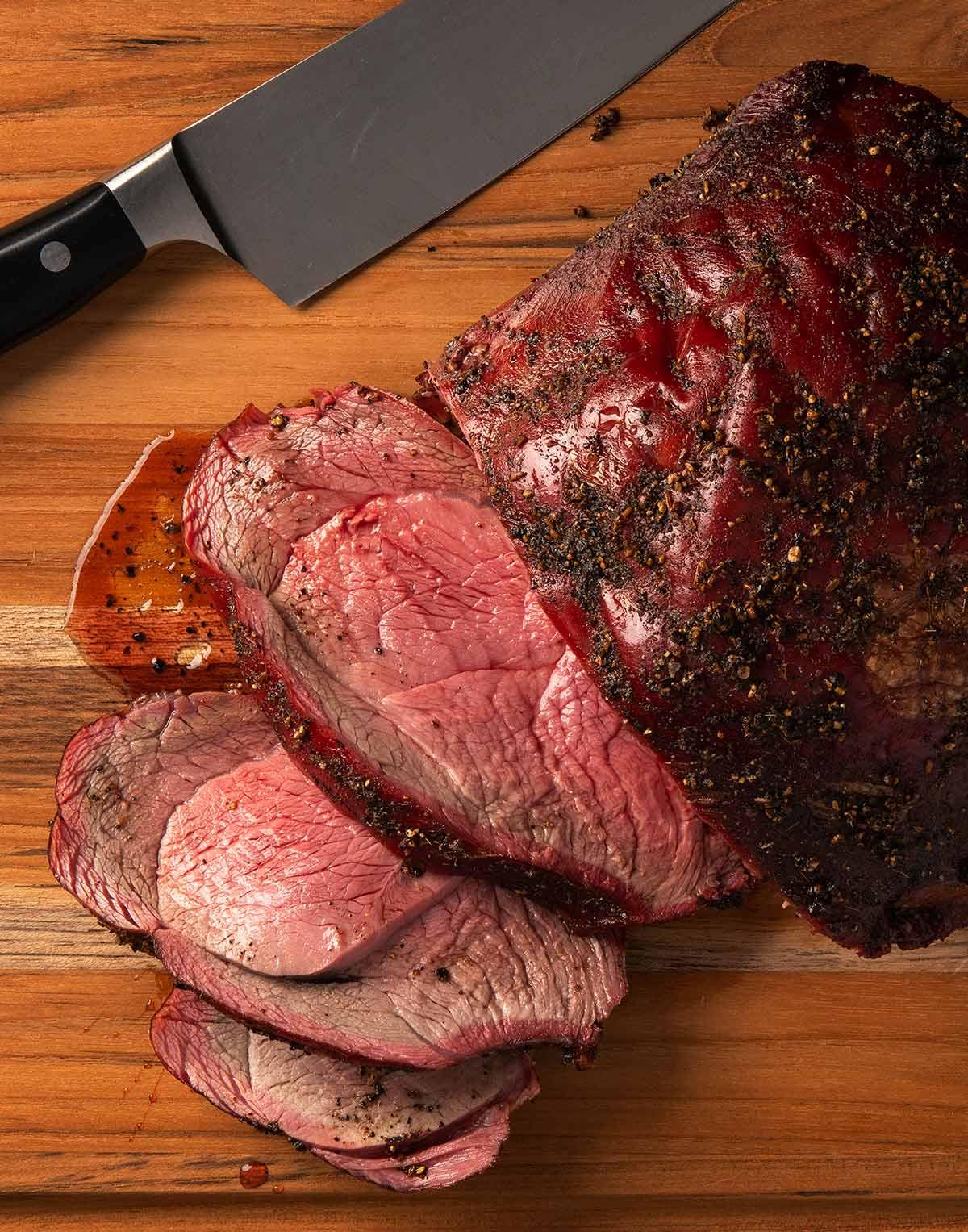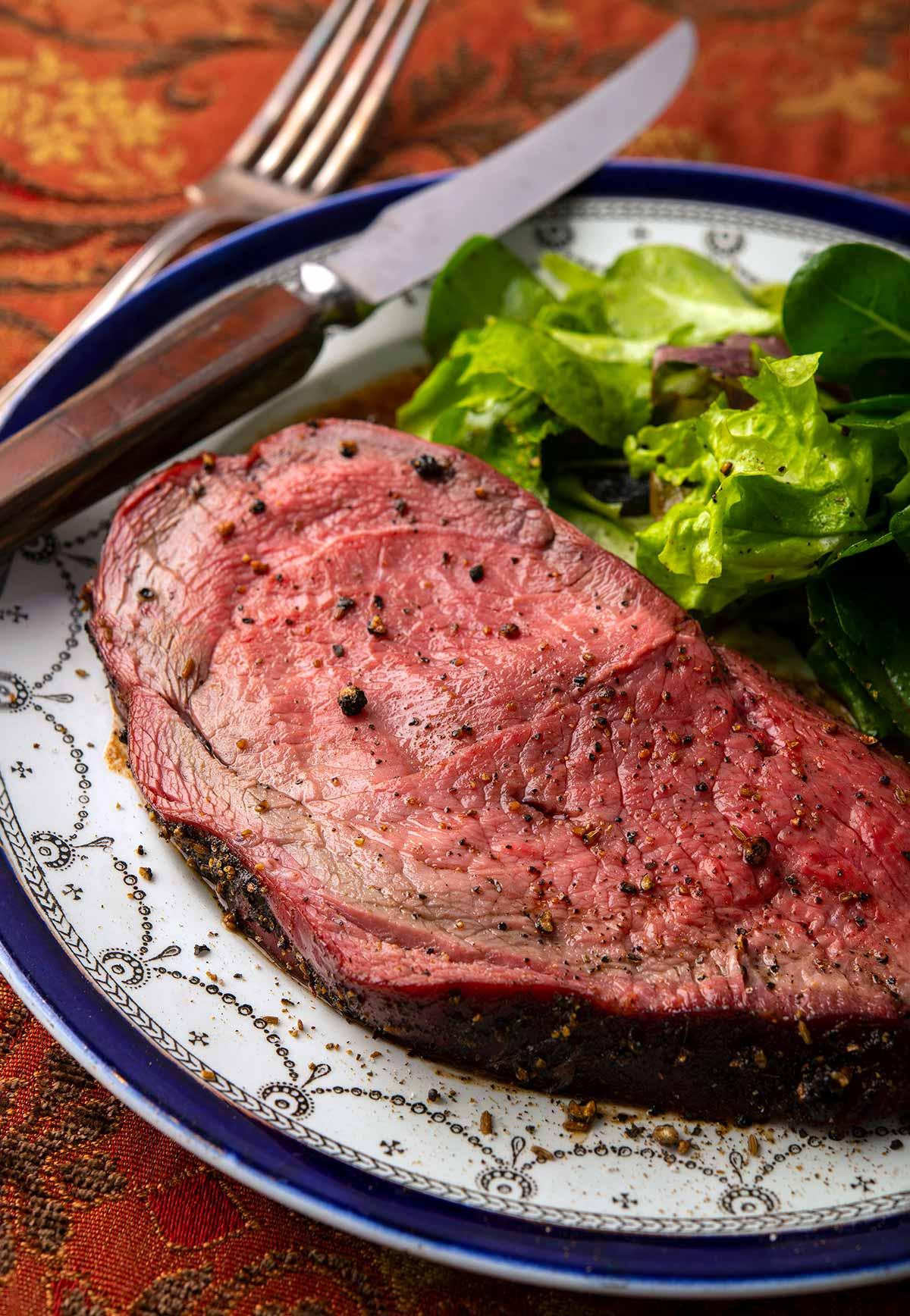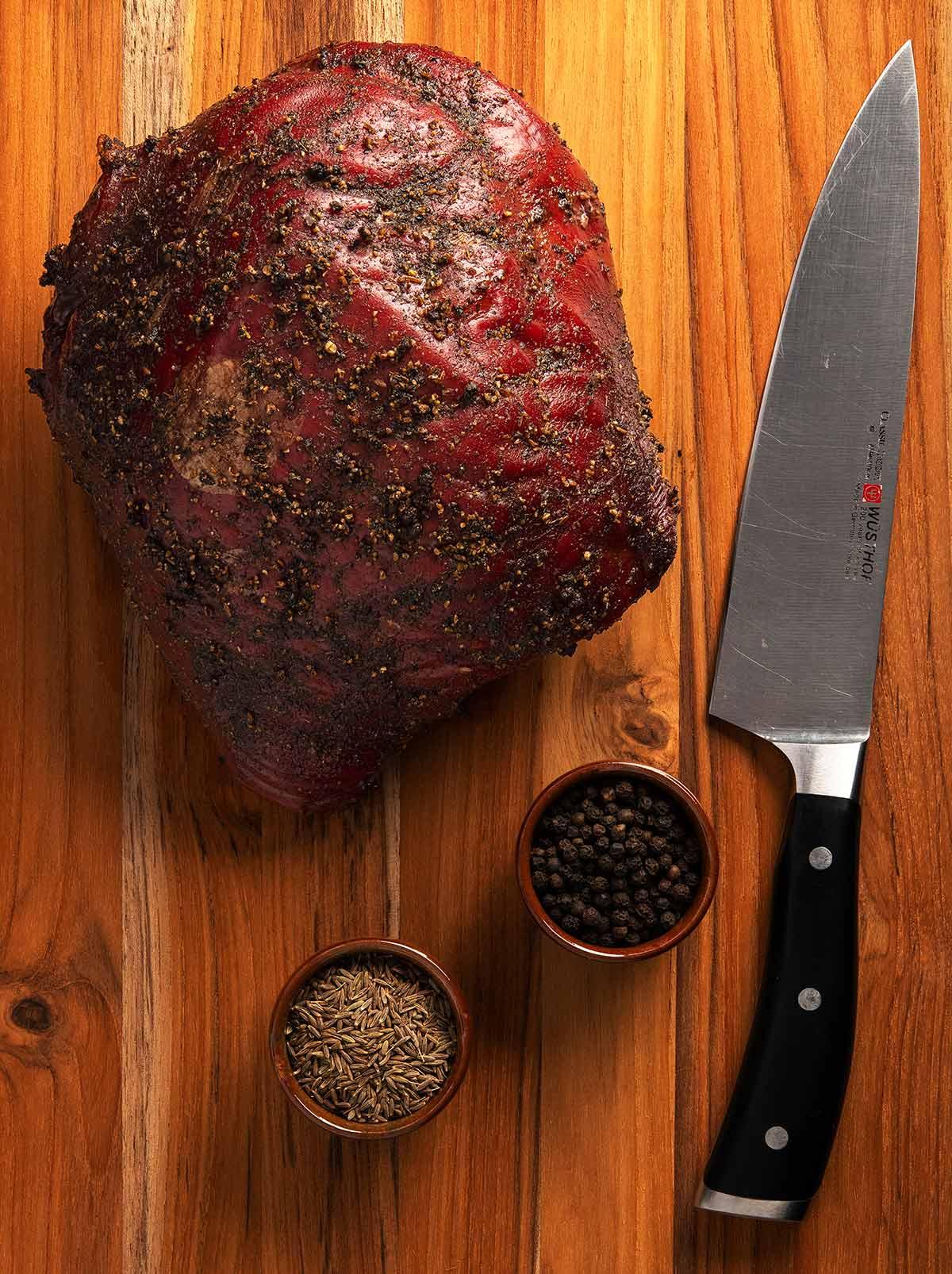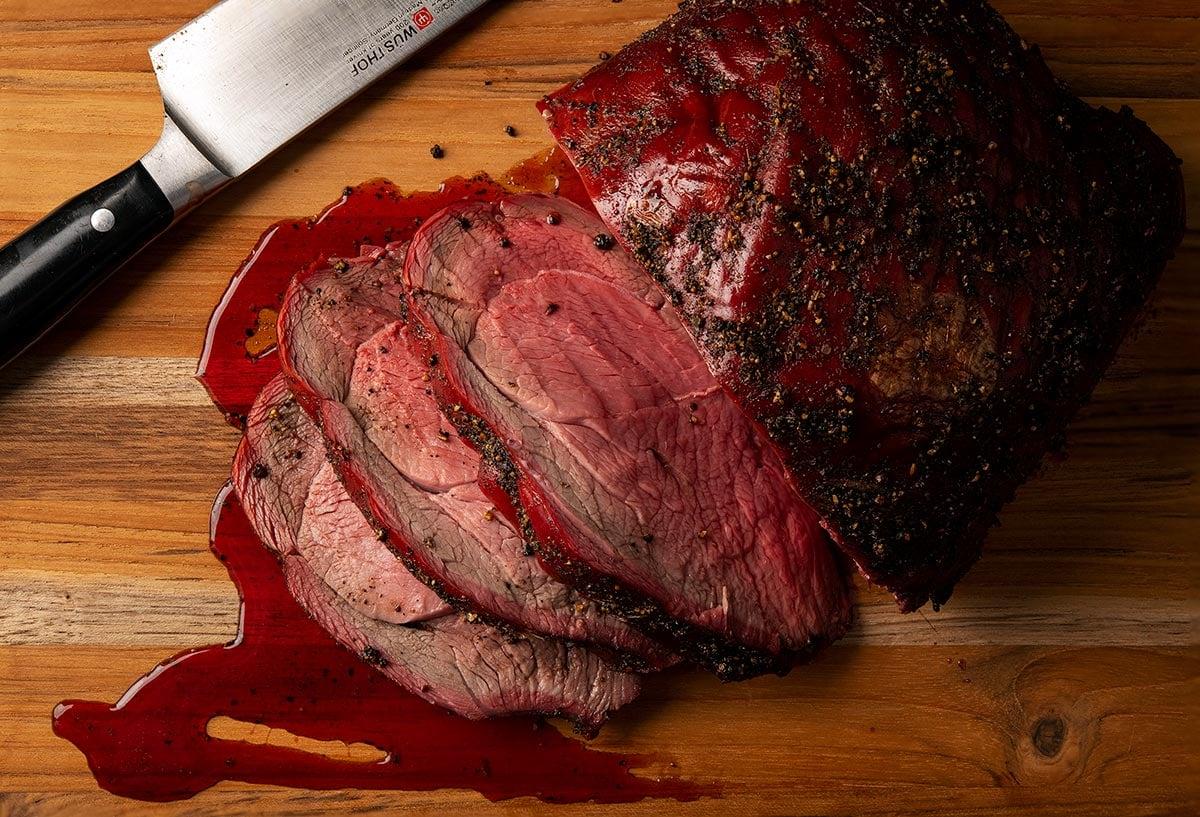If you’re in search of a fail-safe recipe for elk roast, then look no further. I’ve got just the method for you – reverse searing it slowly and finishing it off with high heat. And guess what? This technique works wonders for any large roast, not just elk.

Before we dive into the details, let me clarify that this recipe specifically focuses on hind leg roasts, rather than front shoulder roasts. You see, the key to achieving that rare-to-medium doneness, just like a perfectly cooked roast beef, lies in using muscle groups with minimal connective tissue. In my book Buck, Buck, Moose, I have a comprehensive tutorial on how to butcher deer and elk if you’re interested.
How to Cook an Elk Roast
One common challenge people face when cooking large roasts is the “black and blue” effect, where the outside appears beautifully browned, but the center remains raw and the outer layers turn gray and unappetizing. That’s where the reverse sear technique comes in, whether you choose to do it in the oven or, even better, in a smoker.
But wait, let me make one thing clear – this is not just an elk roast recipe. It’s a recipe and method that can be applied to all large, red meat roasts, such as beef, moose, deer, oryx, nilgai, large sheep (wild or farmed), caribou, and musk ox.
As you can see from the enticing smoke ring on the meat in the photo, I used a smoker for this recipe. However, feel free to use an oven if you don’t have a smoker handy.
To achieve that delicious crust on the outside, you’ll need a probe thermometer. The Traeger I used comes with one, but any thermometer that provides a constant temperature reading at the thickest part of the roast will do. Simply remove the meat from the heat when it reaches your desired internal temperature.

Carryover Heat
Keep in mind that the target temperature you set for the roast should be lower than your desired final temperature. Why? Because two things come into play – the searing and the carryover heat.
Roasts, especially large ones like this 6-pound elk roast, retain a significant amount of heat due to their size and shape. The closer an object is to a sphere, the more profound its carryover heat will be. Temperature also plays a role here. When you cook at low temperatures, the carryover heat effect is minimal. This is why reverse searing your elk roast helps to limit the “gray ring” at the outer edges of the meat.
Wondering about the science behind carryover heat? Check out this informative article on the topic.
If you were to cook a roast at high temperatures alone, the outside would be overcooked by the time the center reached the desired doneness, even if you let the roast come to room temperature for an hour or more.

Want a Smoke Ring?
The timing of when you take the elk roast out of the fridge depends on your preferred cooking method. If you’re using a smoker, take the roast straight from the fridge to the smoker. This prolongs the smoking time and enhances the development of a desirable smoke ring, as seen in the photos.
However, if you’re using an oven, it’s best to let the roast sit on a cutting board for an hour after salting it. You won’t get a smoke ring in the oven, so the resting period is important for flavor absorption.
Before cooking, consider coating your roast with a little olive oil and sprinkling it with cracked black pepper and cumin and/or coriander. These additions provide a subtle flavor boost.
Once the thickest part of your roast reaches around 110°F, remove it from the smoker or oven. Crank up your oven temperature to the maximum, at least 500°F, or try using your grill if it can reach those high temperatures. If you have access to a pizza oven, even better – temperatures up to 600°F are ideal. Return the roast to the high heat and let it cook for about 10 to 15 minutes, or slightly less if you’re using a pizza oven. The goal is to achieve a lovely crust on the outside.

Resting Your Elk Roast
Now comes the waiting part. Let your roast rest for at least 10 minutes, although 30 minutes is not too long. A 15-minute rest should suffice, allowing the heat to redistribute evenly throughout the meat. When you slice it, you’ll notice that it retains its juices better. Even with a 15-minute rest, there will still be some juice loss, which can be collected for a delicious pan sauce.
If you’re looking for some tantalizing pan sauces to accompany your elk roast, here are a few suggestions: Cumberland sauce, steak Diane sauce, ancho sauce for a touch of Mexican flair, steak au poivre, or classic Southern red eye gravy.
To complete the meal, serve your perfectly cooked elk roast with a lovely salad and your choice of bread, potatoes, or another starch to round out the flavors.
Oh, and don’t forget about the leftovers! They make incredible “roast beast” sandwiches or can be used in steak salads. You could also chop the meat for tacos or enchiladas.
For similar techniques applied to different cuts and species, check out my seared bison steak recipe and my Canada goose breast recipe.
Enjoy your mouthwatering reverse seared elk roast, and don’t hesitate to experiment with different flavors and sauces to make it truly your own.



